Table of contents
Raw white wine vinegar has a fine, sour white wine note that not only goes well with salads and sauces, but is also suitable for refining vegetables. Organic quality is preferable.
Use in the kitchen
White wine vinegar is vinegar made from white wine . It has a sour, mild fruity taste with a spiciness that is sometimes more or less pronounced, depending on the wine used.
White wine vinegar can be used in many different ways in the kitchen. It is often used as a seasoning, especially as an ingredient in salad dressings. Cucumber salad, asparagus salad, tomato and avocado salad, orange and radicchio salad, fennel salad or lamb's lettuce with mushrooms, but also simple leaf salads, all get a spicy taste from white wine vinegar. It is also ideal for preserving and pickling raw vegetables and fruit.
White wine vinegar gives light sauces (e.g. vegan cream sauce, hollandaise sauce, mustard sauce, "cheese sauce" ) and soups a fine, sour note (e.g. chilled pea and herb soup with almond foam ). Homemade chutneys, salsa verde and mustard can be refined by adding wine vinegar. It is also suitable for refining all kinds of Mediterranean dishes, e.g. risotto or vegetable stir-fries with vegan fish alternatives. Oven-baked carrots glazed with white wine vinegar and agave syrup are also recommended.
Vinegar is also used to prepare drinks and non-alcoholic soft drinks, such as a thirst-quenching spritzer with sparkling water and 1-2 tablespoons of vinegar. 1
Is white wine vinegar raw? This depends on the method of production of the white wine used and on whether the white wine vinegar has been pasteurized. Unpasteurized white wine vinegar made from raw white wine (not heated above 42 °C) is considered raw. Is white wine vinegar vegan? Whether white wine vinegar is vegan depends on the wine filtering method - read more about this in the white wine article.
own
You can make your white wine vinegar - either using vinegar essence or mother of vinegar (more on this in the "Storage Tips" chapter). Below we describe the process using mother of vinegar.
You can buy a mother of vinegar in certain drugstores or online. Add a wine. We recommend vegan, low-sulfur organic wines, as sulfurization is a process that extends shelf life and therefore affects the conversion time and degree of conversion. You also need a container (clay, wood, glass) with a large surface area to allow good gas exchange - the bacteria depend on oxygen to convert alcohol into vinegar. Last but not least, you need a breathable cloth (e.g. gauze) to cover the container.
Mix the white wine with water in a ratio of 5:1 (5 parts wine, 1 part water). Add the mother of vinegar. Place the container covered with the cloth in a suitable place. This should have a relatively stable temperature, ideally in the range of 25-30 °C. Since the temperature influences bacterial activity, the process takes place faster at higher temperatures. Occasionally turning the container over promotes gas exchange. The whole process takes 2-3 months. After 2-3 weeks, take small control samples every day. If the taste is right for you, you can bottle the white wine vinegar (pour it through a sieve). Leave a small part, including the mother of vinegar, in the container. This can be enriched with wine again.
Store the bottled vinegar in a cool place protected from light (e.g. cellar) for 2-3 months before consumption.
Vegan recipe for cucumber and radish salad with white wine vinegar
Ingredients (for 2 people): ½ cucumber, 200 g radish, 1 bunch of garden cress, 4 tbsp rapeseed oil, 2 tbsp white wine vinegar (preferably raw and organic), 1-2 tsp apple syrup, a little salt andpepper .
Preparation: Wash the cucumber. Peel the radish. Slice both into thin slices. Rinse the garden cress and shake dry. For the dressing, mix the oil, white wine vinegar and apple syrup with a whisk and season with salt and pepper. Fold in the cucumber and radish slices. Arrange the vegan salad on two plates and sprinkle with cress.
Vegan recipes with white wine vinegar can be found under the note: " Recipes that have the most of this ingredient ".
| Not only vegans or vegetarians should read this: Vegans often eat unhealthily. Avoidable nutritional errors . |
Purchasing - Storage
Most supermarkets (e.g. Coop, Migros, Denner, Volg, Spar, Aldi, Lidl, Rewe, Edeka, Hofer, Billa ) offer white wine vinegar all year round. In organic supermarkets (e.g. Denn's Biomarkt, Alnatura ) you can find it in organic quality.
White wine vinegar from conventional production sometimes contains antioxidants (such as potassium metabisulfite), which should be clearly stated on the packaging. Organic products do not contain such additives. 1 There are also pasteurized vinegars and natural, unheated vinegars. You can also often find white wine vinegar in stores that has been flavored with natural herbal flavors.
The availability of white wine vinegar varies depending on the size of the store, catchment area, etc. Our recorded food prices for the DA-CH countries can be found above under the ingredient image - and by clicking you can see their development at various suppliers.
Storage tips
White wine vinegar can be stored properly for several years, i.e. in an airtight container in a dark, cool place. Musty-smelling vinegar is best thrown away.
The living acetic acid bacteria in natural wine vinegar can multiply in warmer storage conditions and thus form a mother of vinegar. This is a gelatinous mass of acetic acid bacteria that is completely harmless to health. It is used in traditional vinegar production to "inoculate" starting liquids in order to speed up the conversion of alcohol to vinegar. 1 The mother of vinegar can also be easily removed with a sieve if you do not want to eat it.
Ingredients - Nutritional values - Calories
The energy content of white wine vinegar is 28 kcal per 100 g. There are hardly any carbohydrates (0.8 g/100g) or proteins (0.08 g/100g). The proportions of fat and fiber are negligible. 2
100 g of white wine vinegar contains 0.16 mg of manganese - that is 8% of the daily requirement. Balsamic vinegar (0.13 mg/100g) and rice vinegar (0.2 mg/100g) have similar contents. Red wine vinegar (0.05 mg/100g) contains less manganese,while herbal wine vinegar (0.25 mg/100g) and apple cider vinegar (0.25 mg/100g) contain slightly more. Pine nuts are a good source of manganese with 8.8 mg/100g. 2
100 g of white wine vinegar contains 18 mg of magnesium (5% of the daily requirement). The content is comparable to that of herbal wine vinegar (20 mg/100g) and rice vinegar (22 mg/100g). Horseradish is particularly rich in magnesium with 628 mg/100g. 2
White wine vinegar contains 71 mg of potassium per 100 g (4% of the daily requirement). Herbal wine vinegar (100 mg/100g), apple cider vinegar (73 mg/100g) and red wine vinegar (39 mg/100g) have similar amounts of the mineral. Dried seaweed contains a lot of potassium (eg kombu seaweed : 6100 mg/100g, dulse : 4684 mg/100g), but only small amounts should be consumed at a time due to the high iodine content. 2
Acetic acid is the main compound in wine vinegar. It also contains various organic acids (e.g. citric acid, tartaric acid), esters, ketones and aldehydes, which contribute to its organoleptic properties. The secondary plant substances it contains include phenols, carotenoids and phytosterols. 3 ,4
The complete ingredients of white wine vinegar, the coverage of the daily requirement and comparison values with other ingredients can be found in our nutrient tables. In the article Nutrients explained you will get a detailed insight into the topic.
Health effects
Is white wine vinegar healthy? Functional properties that have been proven to be present in vinegar include antibacterial, anti-infective, antihypertensive, antioxidant and anti-cancer effects. It is also said to regulate fat metabolism, promote digestion, improve blood sugar levels, reduce the effects of diabetes and prevent cardiovascular diseases. 3,5 ,6,7
The antibacterial and anti-infective activity of vinegar is attributed to the presence of organic acids, although polyphenols also contribute. Phenols are responsible for antioxidant properties. The effects of some vinegars on regulating blood sugar levels, lipid metabolism and weight loss are attributed to acetic acid. Some types of vinegar have been shown to have anti-cancer effects in studies. However, these results were obtained primarily from cell and animal studies and the responsible ingredients remain largely unclear. 5 The results of a 2010 study indicate that the method of production of vinegar has an impact on its bioactive compounds and thus functional properties. For example, the content of catechin and epicatechin in industrial vinegar was found to be higher than that in traditional vinegar. 8
Dangers - Intolerances - Side effects
Excessive consumption of vinegar can cause health problems. People who have consumed large amounts of vinegar over a long period of time have been found to excrete high levels of potassium, sodium and bicarbonate in the urine, as well as to stimulate plasma renin activity in the blood plasma. It is known that a person who consumed around 250 ml of vinegar (12.5 g of acetic acid) daily had to be hospitalized with hypokalemia (disturbance of the electrolyte balance). There have also been reports of injuries to the mucous membranes of the mouth and esophagus caused by vinegar, and chemical burns to the skin caused by the use of vinegar to treat skin diseases. 6
White wine vinegar and white wine, as well as other acidic drinks and foods, can soften the tooth structure and thus cause tooth erosion. It is recommended to consume such products only in moderation, to avoid brushing your teeth immediately before and after consumption and to use a fluoride rinse afterwards or to eat a sugar-free yoghurt to neutralize the acid and remineralize. 9
Folk medicine - natural medicine
Oxymel is an ancient medicine made from honey and vinegar (usually white wine vinegar). Hippocrates (460-377 BC), his contemporaries, and even today's doctors prescribed it for persistent coughs. Hippocrates also recommended vinegar for treating wounds and cleaning ulcers. Japanese samurai warriors used vinegar tonic as a tonic in the 8th century because they believed it gave them strength and power. In the 10th century, Sung Tse, the founder of forensic medicine, advocated washing hands with sulfur and vinegar to prevent infections during autopsies. According to writings by American doctors from the late 18th century, they treated many diseases, including dropsy, croup, and stomach pain, with vinegar. Before the development of blood sugar-lowering drugs, diabetics drank "vinegar teas" to relieve their chronic suffering. 3.10
In various coastal towns around the world, vinegar is used immediately after a jellyfish sting because it deactivates nematocysts. Nevertheless, a bath in hot water is considered the most effective first treatment for a jellyfish sting. In addition, you read and hear in the media about recommendations to treat nail fungus, head lice and warts with vinegar. However, there is no scientific basis for these treatment strategies. Experts also advise against using vinegar preparations to treat wounds or as a household disinfectant. 10
Ecological footprint - animal welfare
The CO 2 footprint is primarily used to assess the climate friendliness of a food. This depends on various aspects, such as cultivation method (conventional/organic), seasonality, country of origin, processing, transport and, if applicable, packaging. CarbonCloud estimates the CO 2 footprint of 1 kg of white wine vinegar from the USA to be 1.18 kg CO 2 eq. 11 The CO 2 footprint of 1 kg of white wine is 1.74 kg CO 2 eq. according to The Big Climate Database. 12 According to a 2017 study, the production of 1 liter of aged wine vinegar causes 1.94 to 2.54 kg CO 2, depending on where the vinegar is produced (directly on the farm or externally). 13
The same study calculated the water footprint of aged wine vinegar. This is between 1332 and 1892 liters of water per liter of wine vinegar. 13 According to a 2011 study, around 870 liters of water are needed to produce 1 kg of wine. 14
In conventional agriculture, synthetic pesticides are often used to combat unwanted plants and insects. These have been proven to have a negative impact on the environment and affect important pollinators, birds and mammals, among others. Accordingly, when buying white wine vinegar, you should choose organic products in order to protect biodiversity and your own health, among other things. The use of such pesticides is prohibited in organic farming.
Detailed explanations of various sustainability indicators (such as ecological footprint, CO2 footprint, water footprint) can be found here .
Worldwide occurrence - cultivation
The production of vinegar dates back to at least 200 BC. Vinegar and its use as a seasoning and preservative or as a component of simple medicines has been known since early antiquity. 15,16
Wine vinegar is mainly produced in countries with an oenological tradition, such as Mediterranean countries, where it is widely used as a seasoning, acidifying agent and preservative. 16
Industrial production
The main raw materials for the production of vinegar are an alcohol-containing liquid, Acetobacter bacteria (so-called acetic acid bacteria; a genus of aerobic bacteria) and oxygen. Vinegar is produced from a variety of alcohol-containing liquids, most commonly wine and beer. Alternatively, an alcohol product can first be produced from fermentable carbohydrate sources by alcoholic fermentation (in the presence of yeasts, e.g. Saccharomyces cerevisiae ), such as rice, sugar cane or fruit. Yeasts convert sugar into alcohol (ethanol) under anaerobic conditions. 3,17, 18
Alcoholic, diluted liquids (alcohol content below 7.5% by volume) are then subjected to acetic acid fermentation. Aerobic acetic acid bacteria convert alcohol into acetic acid. The bacteria work best at a temperature of 28 °C with full air supply. The lowest temperature that acetic acid bacteria can tolerate is 20 °C and the highest is 33 °C. 18 Acetic acid fermentation is not actually fermentation, but rather an incomplete oxidation or fermentation, as the process requires oxygen. 19
There are roughly two systems for vinegar production: traditional, slow processes (e.g. Orléans process) and industrial, fast underwater processes (e.g. submerged processes, generator processes). 3,16
Slow processes are surface culture fermentations in which acetic acid bacteria are placed at the interface between the liquid and the air. The presence of the bacteria and the conversion of ethanol into acetic acid is thus limited to the surface of the vinegar-producing liquid (white wine vinegar ). The Orléans process, one of the oldest techniques for producing vinegar, uses wooden barrels with side openings (for air circulation). Today, slow methods are used to produce traditional, select vinegars. A long period of time (weeks to months) is required to reach a high degree of acetic acid - this leads to expensive prices. These systems allow simultaneous acetic acid production and maturation, producing high-quality vinegars. 3,15, 16,18
In rapid production processes, vinegar is produced within a few days (between 20 hours and 3 days). In commercial vinegar production, underwater processes such as generator processes and submerged processes are used. In these methods, acetic acid bacteria cultures are immersed (directly or on a device) in alcohol-containing liquids and oxygen is added. One such method is the submerged process, which is primarily used for the industrial production of wine vinegar. The acetic acid bacteria are located directly in the liquid. Turbines continuously blow air bubbles into the liquid, thus ensuring the oxygen supply. The conversion of alcohol to acetic acid by the bacteria takes place at the air-liquid interfaces of the air bubbles. A disadvantage of these systems is that there is a loss of volatile compounds. 3,15,16,18
The longer fermentation time of traditional methods allows the formation of a non-toxic slime of acetic acid bacteria known as mother of vinegar. Many producers filter and pasteurize their vinegar before bottling to prevent the formation of these organisms. After opening, stored, natural vinegar may form a mother of vinegar, which can be removed by filtering. 10,18
Further information
Wine vinegar is the most commonly used vinegar in the Mediterranean countries and Central Europe. As with wine, there is a considerable range of quality in wine vinegar. The quality depends on the wine, the production process and storage. Better wine vinegars mature for up to two years in wooden barrels and have a complex, fine taste. Wine vinegars made from individual types of wine, such as champagne, sherry or pinot grigio, are generally expensive. 18
However, vinegar, from the French vin aigre, meaning "sour wine", can be made not only from wine, but from almost any fermentable carbohydrate source, such as molasses, apples, grapes, grains, coconuts, melons, honey and potatoes . A distinction can be made between vinegar made from fruit juices and vinegar made from raw plant materials. 3,10
In the USA, vinegar products must have an acidity of at least 4%. In Europe, however, there are regional standards for vinegar. White spirit vinegars contain 4-7% acetic acid, while apple cider vinegar and wine vinegar contain 5-6% acetic acid. The alcohol content of wine vinegar is 1.5% vol. That of other vinegars is 0.5% vol. 10.20
Flavored specialty vinegars are divided into herbal and fruit vinegars. Herbal vinegars are wine vinegars or white spirit vinegars that have been flavored with garlic, basil, tarragon, cinnamon, cloves or nutmeg, for example. Fruit vinegars consist of wine vinegar and white vinegar that are sweetened with fruit or fruit juice. Traditional vinegars are products made from regional foods, produced according to traditional customs. Balsamic vinegar from Modena (Aceto Balsamico di Modena) is made from the local white Trebbiano grapes, which are harvested as late as possible, slowly fermented and concentrated by aging in barrels made of various types of wood. Rice vinegar is produced primarily in Asia, coconut and cane vinegar can be found in India and the Philippines, and date vinegar is well known in the Middle East. 10
You can also find detailed articles about the following vinegars: balsamic vinegar, white balsamic vinegar, red wine vinegar ,herbal wine vinegar, apple cider vinegar and rice vinegar .
Alternative names
In English, white wine vinegar is called white wine vinegar.
Other uses
White vinegar is not only suitable for preparing food, but also as a cleaning agent, e.g. for removing urine scale and limescale deposits.
Bibliography - 19 Sources
| 1. | Pini U. Das Bio-Food Handbuch. Ullmann Verlag: Potsdam; 2014: 186. |
| 2. | DEBinet Deutsches Ernährungsberatungs- & -informationsnetz. Weisswein-Essig Kühne. |
| 3. | Ho CW, Lazim AM et al. Varieties, production, composition and health benefits of vinegars: A review. Food Chemistry. 2017;221:1621–1630. |
| 4. | Arvaniti OS, Mitsonis P, Siorokos I, Dermishaj E, Samaras Y. The physicochemical properties and antioxidant capacities of commercial and homemade Greek vinegars. Acta Sci Pol Technol Aliment. 2019;18(3):225–234. |
| 5. | Chen H, Chen T, Giudici P, Chen F. Vinegar Functions on Health: Constituents, Sources, and Formation Mechanisms. Comprehensive Reviews in Food Science and Food Safety. 2016;15(6):1124–1138. |
| 6. | Santos HO, de Moraes WMAM et al. Vinegar (Acetic acid) intake on glucose metabolism: A narrative review. Clinical Nutrition ESPEN. 2019;32:1–7. |
| 7. | Budak NH, Aykin E et al. Functional properties of vinegar. Journal of Food Science. 2014;79(5):757-764. |
| 8. | Budak HN, Guzel-Seydim ZB. Antioxidant activity and phenolic content of wine vinegars produced by two different techniques. J Sci Food Agric. 2010;90(12):2021–2026. |
| 9. | Zero DT, Lussi A. Erosion--chemical and biological factors of importance to the dental practitioner. Int Dent J. 2005;55(4 Suppl 1):285–290. |
| 10. | Johnston CS, Gaas CA. Vinegar: medicinal uses and antiglycemic effect. MedGenMed. 2006;8(2):61. |
| 11. | CarbonCloud: White wine vinegar (United States of America). 2024. |
| 12. | The Big Climate Database (Version 1.1): Wine, white, average values. 2024. |
| 13. | Bartocci P, Fantozzi P, Fantozzi F. Environmental impact of Sagrantino and Grechetto grapes cultivation for wine and vinegar production in central Italy. Journal of Cleaner Production. 2017;140:569–580. |
| 14. | Mekonnen MM, Hoekstra AY. The green, blue and grey water footprint of crops and derived crop products. Hydrol. Earth Syst. Sci. 2011;15:1577–1600. |
| 15. | Mas A, Torija MJ et al. Acetic acid bacteria and the production and quality of wine vinegar. The Scientific World Journal. 2014;2014:e394671. |
| 16. | Tesfaye W, Morales ML, Garcı́a-Parrilla MC, Troncoso AM. Wine vinegar: technology, authenticity and quality evaluation. Trends in Food Science & Technology. 2002;13(1):12–21. |
| 17. | Ho CQ, Fazry S et al. The Biochemistry of Vinegar Production. In: Bekatorou A, Hrsg. Advances in Vinegar Production. Vereinigtes Königreich: CRC Press; 2019:29-38. |
| 18. | Hailu S, Admassu S, Jha YK. Vinegar Production Technology – An Overview. Beverage & Food World. 2012;29-32. |
| 19. | Chemie de: Essigsäuregärung. |

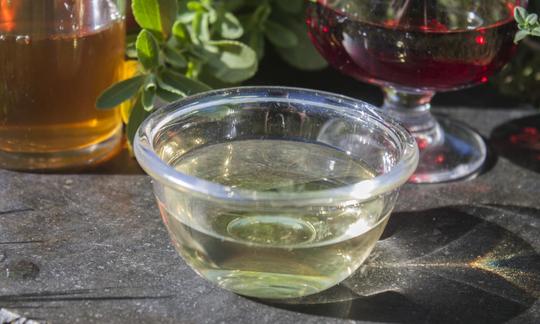

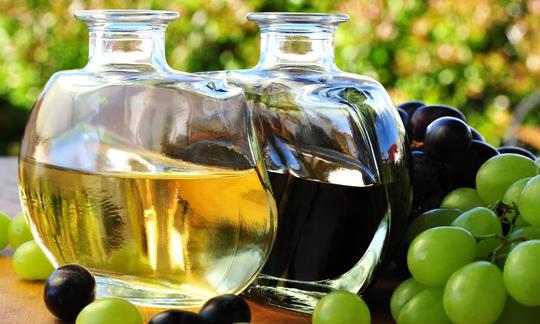

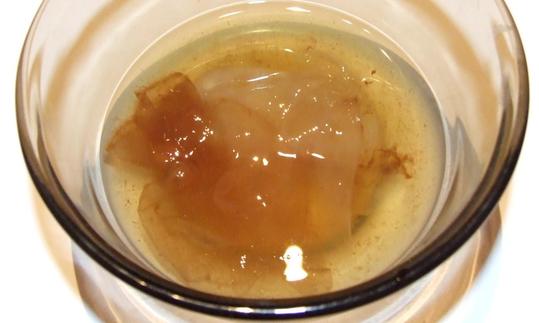

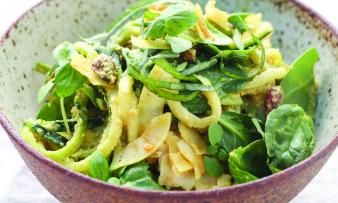
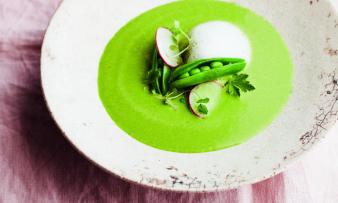
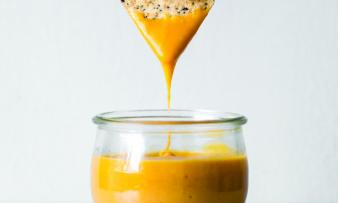


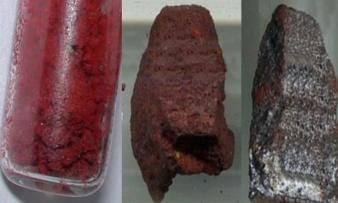


Comments